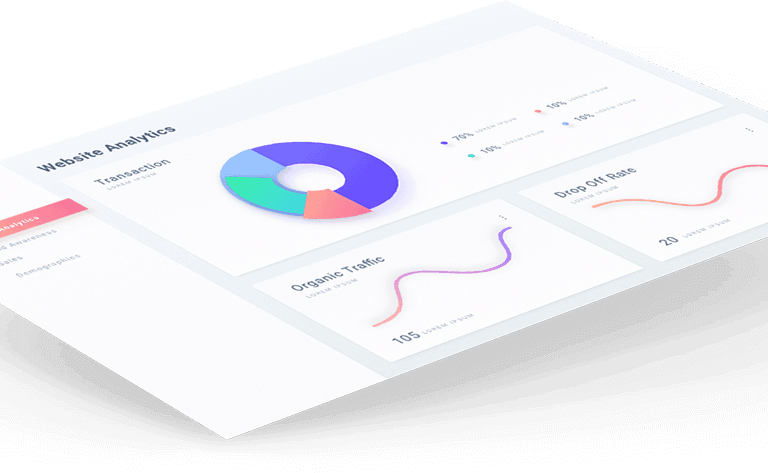Managing a fleet of vehicles in regional Australia comes with unique challenges, such as long distances, remote areas, and limited infrastructure. To optimize fleet operations and improve efficiency, many businesses are turning to fleet tracking systems.
In this article, we will explore the implementation of fleet tracking in regional Australia. We will discuss the benefits, challenges, and best practices to ensure a successful deployment of fleet tracking technology.
Understanding Fleet Tracking
Fleet tracking involves the use of GPS and telematics technology to monitor and manage vehicles in real time. It enables businesses to track vehicle locations, monitor driver behaviour, optimize routes, and gather valuable data for better decision-making. Fleet tracking systems typically consist of GPS devices installed in vehicles, software applications or platforms for data analysis, and connectivity for data transmission.
Benefits of Fleet Tracking in Regional Australia
Implementing fleet tracking in regional Australia offers several benefits for businesses operating in this unique environment:
Improved Fleet Efficiency
Fleet tracking allows businesses to optimize routes, reduce fuel consumption, and minimize idle time, resulting in cost savings and increased operational efficiency.
Enhanced Vehicle Security
Real-time tracking and geofencing capabilities enable businesses to monitor vehicle locations, detect unauthorized use, and recover stolen vehicles quickly, enhancing security and reducing losses.
Better Driver Safety
Fleet tracking systems provide insights into driver behavior, such as speeding or harsh braking, allowing businesses to identify and address safety issues proactively. This helps reduce accidents and improves driver safety.
Accurate ETA and Customer Service
With fleet tracking, businesses can provide customers with an accurate estimated time of arrivals (ETAs), improving customer satisfaction and allowing for better coordination of deliveries and services.
Optimised Maintenance and Asset Management
Fleet tracking systems can track vehicle mileage, engine hours, and maintenance schedules, enabling businesses to proactively manage maintenance, reduce downtime, and extend the lifespan of their assets.
Challenges of Implementing Fleet Tracking in Regional Areas
Implementing fleet tracking in regional Australia can present some unique challenges:
Limited Connectivity
Remote areas in regional Australia often have limited or unreliable network coverage, making it challenging to establish a consistent and reliable connection for real-time tracking and data transmission.
Distance and Geographical Constraints
“Regional Australia encompasses vast distances and diverse terrains. Ensuring effective tracking and communication across these areas requires careful consideration of hardware capabilities, network coverage, and signal strength.”
![]()
Infrastructure Limitations
Some regional areas may have limited infrastructure, including power supply and internet connectivity. Businesses must assess the availability and suitability of infrastructure to support fleet tracking systems.
Resource Constraints
Small businesses in regional areas may face resource constraints in terms of budget, technical expertise, and personnel dedicated to implementing and managing fleet tracking systems.
Selecting the Right Fleet Tracking System
To overcome the challenges and ensure a successful implementation, businesses must carefully select the right fleet tracking system. Consider the following factors when choosing a system:
Coverage and Connectivity
Evaluate the network coverage and connectivity options available in the target regional areas. Look for systems that support multiple network technologies (such as 4G, 3G, and satellite) to maximize coverage and ensure reliable connectivity, even in remote locations.
Hardware Reliability
Choose robust and durable hardware that can withstand the harsh conditions of regional Australia. Look for devices with built-in features like GPS, cellular connectivity, and external antenna options for better signal reception.
Scalability and Flexibility
Consider the scalability of the fleet tracking system to accommodate future growth. Ensure that the system can handle an increasing number of vehicles and provide flexible options for adding new features or integrating with other business systems.
Data and Reporting Capabilities
Look for a fleet tracking system that offers comprehensive data and reporting capabilities. This includes real-time tracking, historical data analysis, driver behaviour monitoring, maintenance scheduling, and customizable reports to gain valuable insights for informed decision-making.
User-Friendly Interface
The fleet tracking system should have an intuitive and user-friendly interface that makes it easy for both fleet managers and drivers to access and interpret the data. Training and support should be provided to ensure a smooth transition and adoption of the system.
Installation and Integration
Once you have selected the fleet tracking system, the next step is installation and integration. Consider the following:
Professional Installation
Engage with experienced professionals who specialize in fleet tracking installations. They will ensure proper installation of hardware devices, including GPS units, sensors, and cameras, to maximize accuracy and reliability.
Integration with Existing Systems
Ensure seamless integration of the fleet tracking system with your existing business systems. This may include fleet management software, dispatch systems, or customer relationship management (CRM) software. The integration allows for efficient data flow and streamlined operations.
Testing and Calibration
Conduct thorough testing and calibration of the system to ensure accurate tracking and data transmission. Test various scenarios and validate the system’s performance in different geographical areas to address any potential issues before full deployment.
Training and Adoption
To ensure successful implementation, provide comprehensive training to your fleet managers and drivers:
Familiarize with the System
Train fleet managers and drivers on the features, functionality, and benefits of the fleet tracking system. Provide hands-on training to ensure they understand how to access and interpret the data, set up alerts, and use the system effectively.
Driver Training
Emphasize the importance of driver compliance and safe driving practices. Educate drivers on how the system monitors their behavior and how it can contribute to their safety and the overall success of the fleet operations.
Continuous Support
Offer ongoing support and assistance to address any questions or concerns that may arise during the implementation and adoption process. Regularly communicate with users to gather feedback, address challenges, and provide additional training if needed.
Overcoming Connectivity Issues
In regional Australia, connectivity issues can hinder effective fleet tracking. Consider the following strategies:
Hybrid Network Solutions
Explore hybrid network solutions that combine different connectivity options, such as cellular networks and satellite communication. This ensures reliable connectivity, even in areas with limited network coverage.
External Antennas
Install external antennas to boost signal strength and improve reception in areas with weak network signals. Position the antennas strategically to minimize interference and maximize connectivity.
Data Caching and Offline Mode
Implement a system that allows for data caching and offline mode. This enables the tracking system to continue collecting data even when there is no network connectivity. Once the connectivity is restored, the data is automatically transmitted.
Maintenance and Support
Regular maintenance and ongoing support are essential for the smooth operation of your fleet tracking system:
Regular Device Checks
Conduct regular device checks to ensure the proper functioning of GPS units, sensors, and other hardware components. Address any issues promptly to minimize downtime and maintain accurate tracking.
Software Updates
Stay up to date with software updates provided by the fleet tracking system provider. These updates often include bug fixes, security patches, and new features that improve system performance and functionality.
Technical Support
Partner with a fleet tracking system provider that offers technical support. This ensures prompt assistance in case of any system issues or emergencies, minimizing downtime and maximizing fleet efficiency.
Scheduled Maintenance
Establish a schedule for routine maintenance tasks, such as database backups, server maintenance, and software upgrades. Regular maintenance helps prevent system failures and ensures optimal performance.
Ensuring Data Security
Data security is paramount when implementing fleet tracking systems. Follow these practices to protect sensitive information:
Secure Data Transmission
Implement encryption protocols, such as Secure Socket Layer (SSL) or Transport Layer Security (TLS), to ensure secure data transmission between devices, software platforms, and servers.
Access Control and User Permissions
Establish user access control and define permissions based on job roles and responsibilities. Limit access to sensitive data and ensure that only authorized personnel can view or modify the information.
Data Privacy Policies
Develop and enforce data privacy policies that comply with relevant privacy regulations. Clearly communicate these policies to employees, drivers, and other stakeholders to ensure the responsible handling of data.
Regular Data Backups
Implement a robust data backup strategy to protect against data loss due to system failures, cybersecurity threats, or accidental deletions. Regularly back up the data and store backups in secure locations.
Best Practices for Successful Implementation
To ensure a successful implementation of fleet tracking in regional Australia, consider the following best practices:
Start with Pilot Projects
Begin with pilot projects in specific regions or with a subset of vehicles to test the effectiveness of the system and address any challenges before full-scale deployment.
Engage Stakeholders
Involve key stakeholders, such as fleet managers, drivers, and IT personnel, throughout the implementation process. Their input and feedback are crucial for a successful deployment and adoption.
Set Realistic Goals
Define clear and measurable goals for implementing fleet tracking, such as reducing fuel consumption, improving driver safety, or enhancing customer satisfaction. Regularly evaluate progress and make adjustments as needed.
Continuous Evaluation and Improvement
Continuously evaluate the performance and effectiveness of the fleet tracking system. Monitor key performance indicators (KPIs) and gather feedback from users to identify areas for improvement and implement necessary changes.
Stay Up to Date with Technology
Keep abreast of emerging technologies and industry trends in fleet tracking. Regularly assess the market for new features, innovations, and advancements that can further enhance the efficiency and effectiveness of your fleet operations.
Conclusion
Implementing fleet tracking in regional Australia offers numerous benefits for businesses operating in remote areas. By selecting the right system, addressing connectivity challenges, providing comprehensive training, and ensuring data security, businesses can unlock the advantages of real-time tracking, improved efficiency, enhanced safety, and optimized fleet management. With careful planning, diligent execution, and ongoing support, businesses can successfully implement fleet tracking to drive operational excellence and achieve their goals.





